This is one in a series of posts on the Nikon Z7. You should be able to find all the posts about that camera in the Category List on the right sidebar, below the Articles widget. There’s a drop-down menu there that you can use to get to all the posts in this series; just look for “Nikon Z6/7”.
For my next step in peeling layers off the onion that is the Nikon Z7 autofocus system, I’m doing aperture series (f/1.4 through f/5.6) with the Nikon 105 mm f/1.4 lens attached via the Nikon FTZ adapter. Here’s the set-up:
The camera is now on a camera stand since I now realize that I have to rack focus between each shot, and I’m scared that I’ll jostle the camera if I try to do that while it’s on a tripod. The intervalometer is attached and is resting on top of the tripod/head assembly on the left. The checkerboard ramp is visible in the center of the image, 2.5 meters from the camera.
The first thing I did is look at the focus shift for the lens. I focused once, wide open, then made 16 exposures at one-third aperture intervals all the way through f/5.6. I processed the data in my Matlab program, and this is what it spit out:
Plotted above as dots above are the image field (sensor plane) focussed distances for all the samples for each of the Adobe RGB color planes. The difference between the three color planes is a measure of longitudinal chromatic aberration (LoCA). The distances are measured from the average of the green plane samples with the lens wide open. Backfocusing is indicated by positive numbers and front focus by negative ones. The heavy lines are the average of all 16 samples at each aperture, and the lighter ones are plus and minus one standard deviation away from that.
It’s pretty obvious that the lens has considerable LoCA, with the red plane at f/1.4 focusing about 10 micrometers behind the green one.
To see the effect on photographs, it’s better to look at the diameters of the circles of confusion (CoCs) implied by the above displacements of the image plane.
Total focus-shift-induced blur circle diameter is about two pixel pitches.
Now let’s try it with autofocus, in AF-S and Pinpoint modes, which gets us CDAF.
The autofocus system compensates for the focus shift. That’s because the camera focuses at taking aperture for that range of f-stops.
Let’s look at the effect of that on image misfocus blur:
That is an excellent performance.
Now we’ll look at AF-S in Single mode, which uses PDAF, possibly in conjunction with CDAF. For these captures, I racked focus alternately forward and backward between the shots.
The focus shift appears to be compensated, but there appears to be a small amount of back-focusing.
In terms of blur circles:
That is again good performance, but with greater scatter than Pinpoint mode.
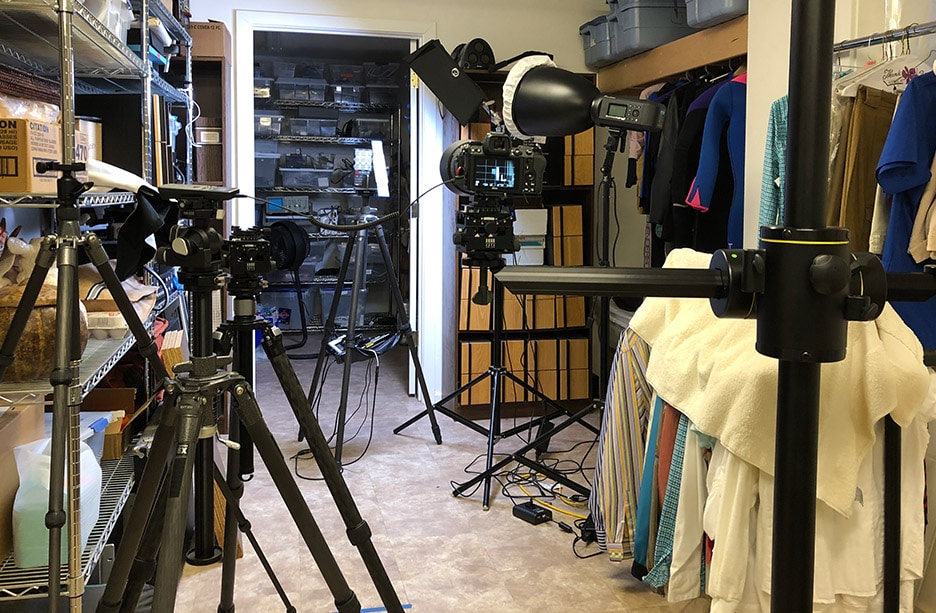
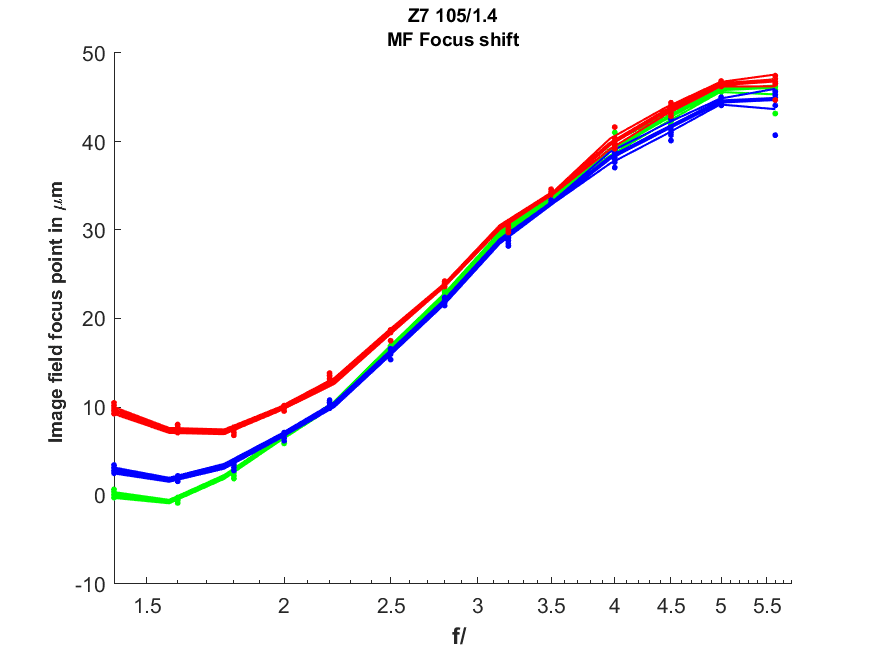
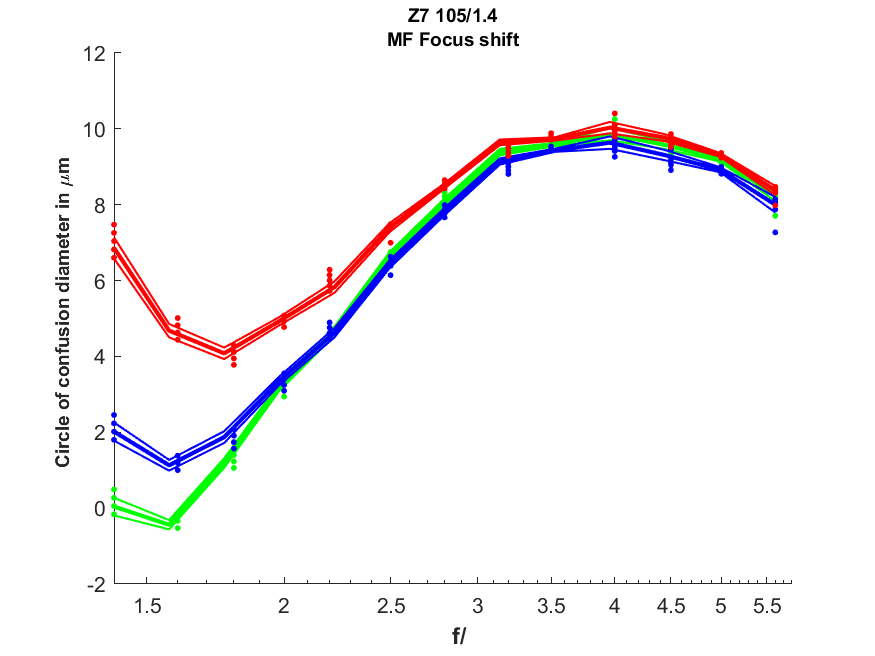
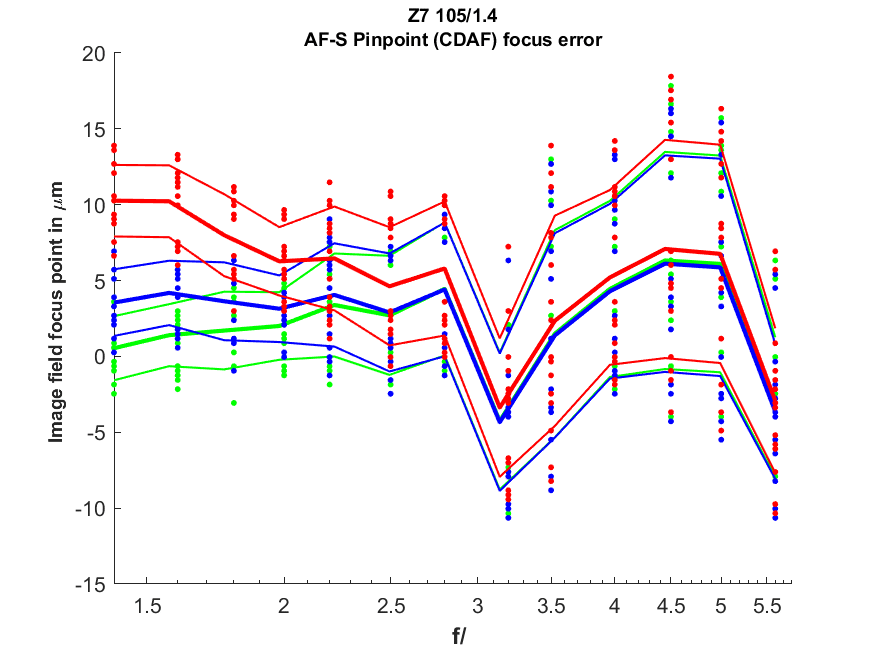

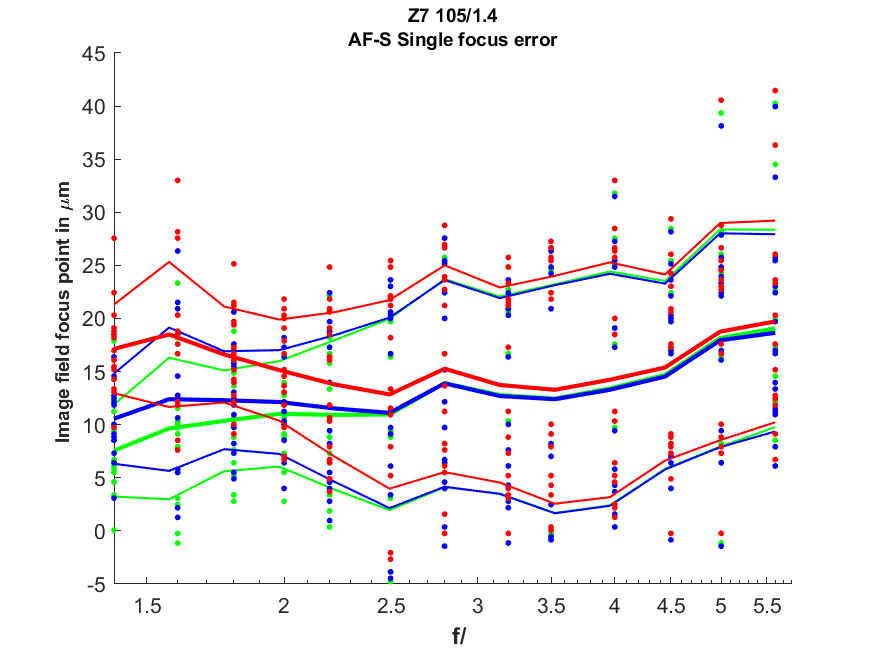

Leave a Reply